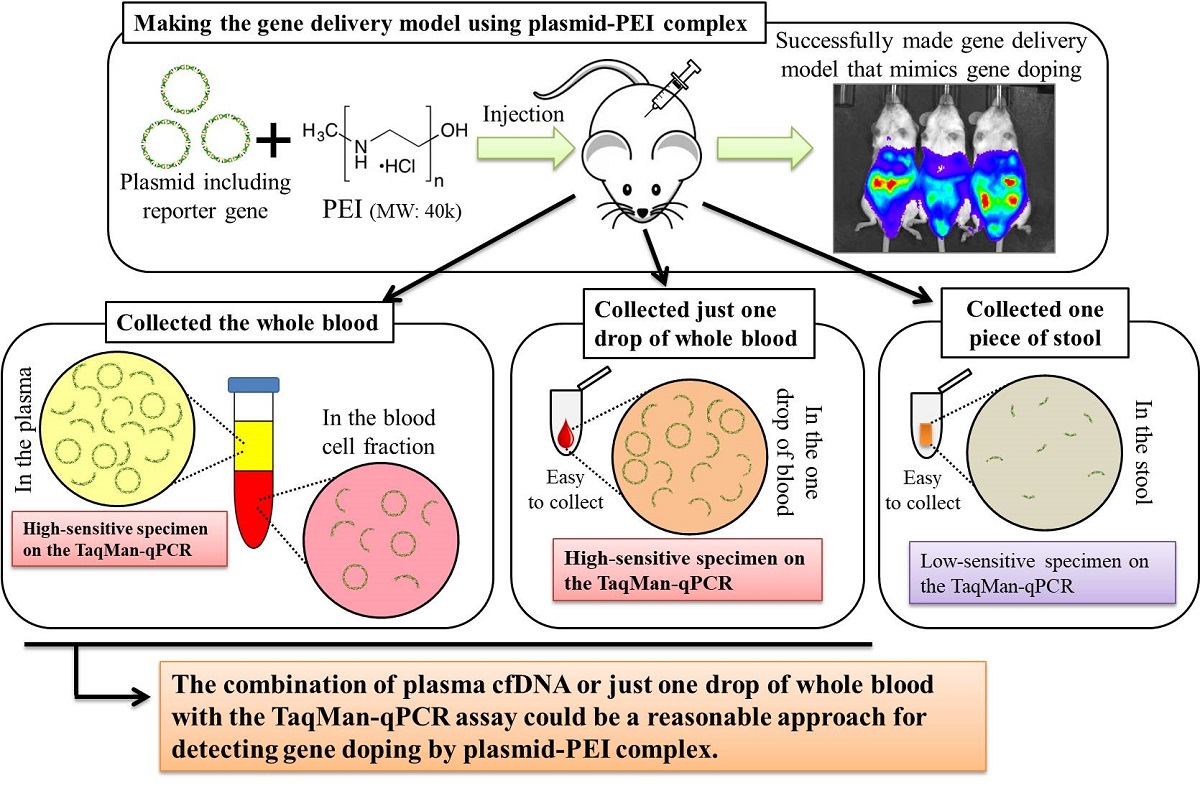The World Anti-Doping Agency has prohibited gene doping in the context of progress in gene therapy. There is a risk that the artificial regulation of genes using plasmids could be applied for gene doping. However, no gold standard method to detect this has been established. Here, we aimed to develop a method to detect multiple transgene fragments as proof of gene doping. First, gene delivery model mice as a mimic of gene doping were created by injecting firefly luciferase plasmid with polyethylenimine (PEI) into the abdominal cavity. The results confirmed successful establishment of the model, with sufficient luminescence upon in vivo imaging. Next, multiple transgene fragments in the model were detected in plasma cell-free (cf)DNA, blood-cell-fraction DNA, and stool DNA using the TaqMan-qPCR assay, with the highest levels in plasma cfDNA. Using just a single drop of whole blood from the model, we also attempted long-term detection. The results showed that multiple transgene fragments were detected until 11 days. These findings indicate that the combination of plasma cfDNA or just one drop of whole blood with TaqMan-qPCR assay is feasible to detect plasmid-PEI-based gene doping. Our findings could accelerate the development of methods for detecting gene doping in humans.

